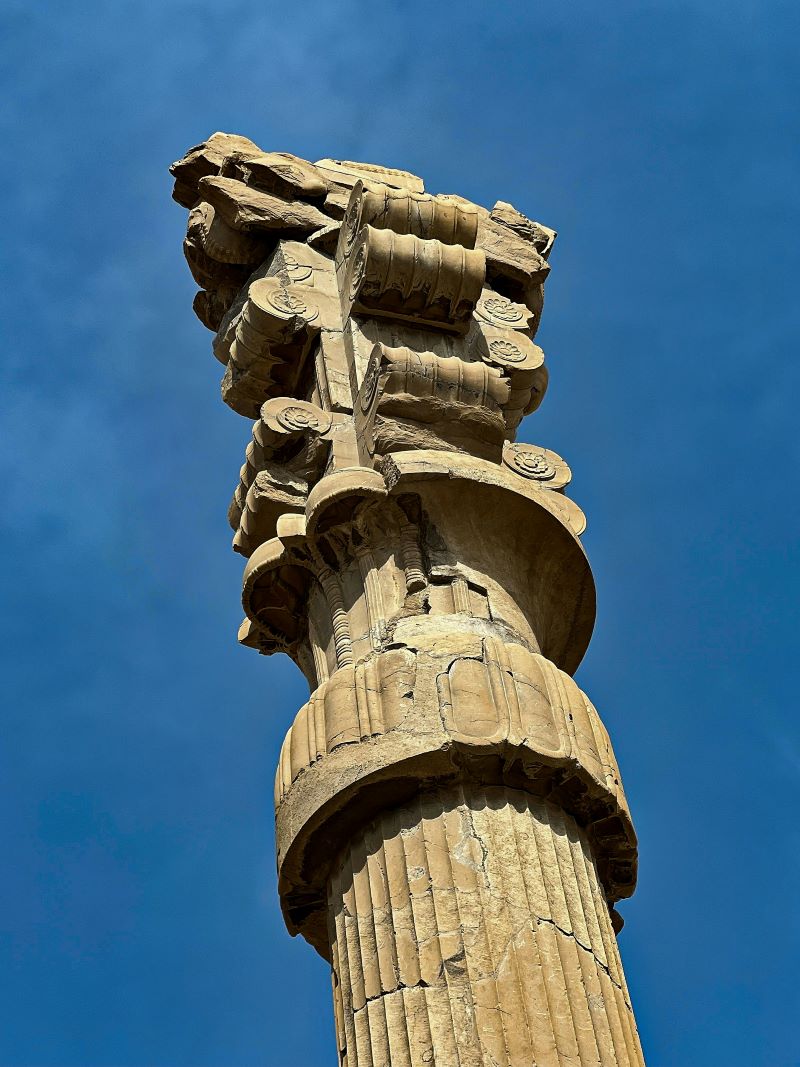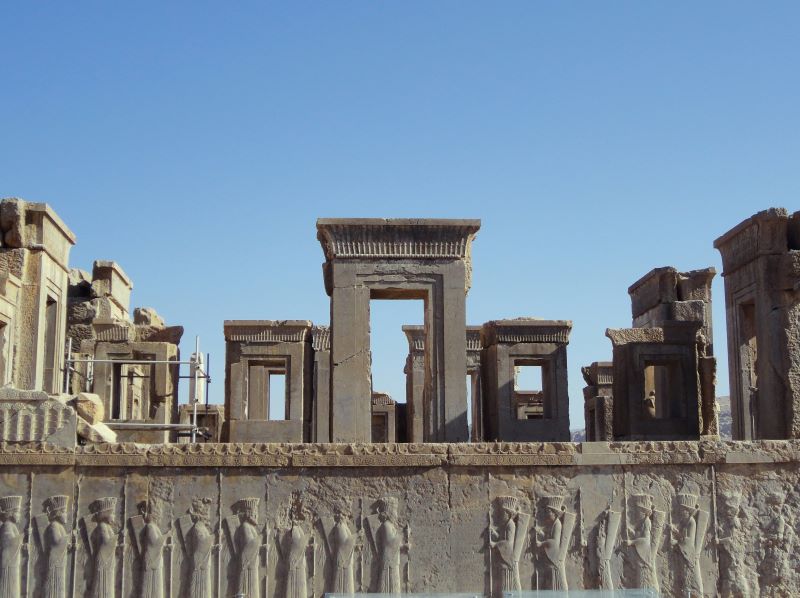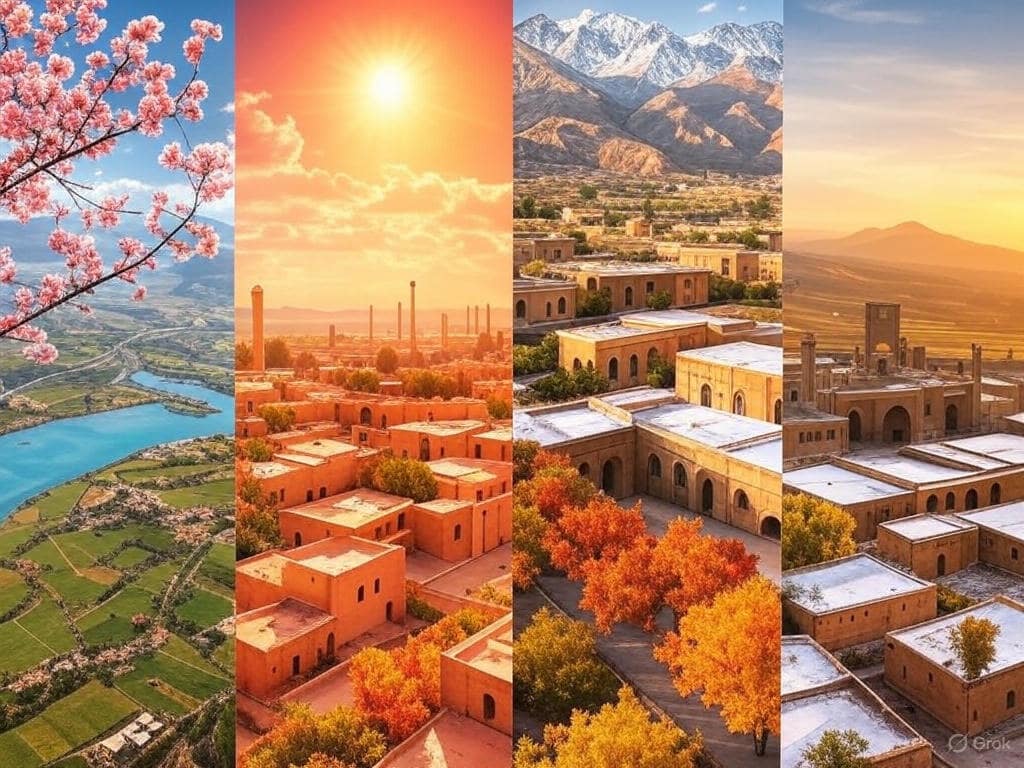Seasons and Temperatures in Iran: A Traveler’s Guide
Introduction
Iran’s diverse geography—from arid deserts to lush coastal plains and towering mountains—creates a wide range of seasonal climates and temperatures, making it essential for travelers to understand these variations when planning a trip. This guide, crafted for the "Honest Guide Iran" website, provides detailed, region-specific information on Iran’s seasons and temperatures, tailored for tourists seeking practical advice. Whether you’re exploring Tehran’s bustling bazaars, hiking the Alborz Mountains, or visiting the Persian Gulf coast, this guide offers actionable insights on what to expect, how to pack, and when to visit. Last updated: April 2025.
Iran’s Climate Zones
Iran’s climate is divided into six distinct zones, each with unique seasonal and temperature profiles, based on a 2023 meteorological study.
- Mild and Humid: Caspian Sea coast, Rasht, Sari. High rainfall (600–2000 mm annually), moderate temperatures.
- Cool and Sub-Humid: Western Iran, Kermanshah. Cooler winters, moderate precipitation.
- Cold and Temperate Semi-Arid: Northwest, Tabriz. Cold winters, moderate rainfall.
- Warm and Semi-Arid: Southwest, Ahvaz. Scorching summers, low rainfall.
- Cool and Arid: Northeast, Mashhad. Dry conditions, cooler temperatures.
- Warm and Hyperarid: Southern deserts, Zahedan. Extreme heat, minimal precipitation.
Seasons and Temperatures
Iran experiences four distinct seasons, each with varying temperatures and conditions depending on the region.
Spring (March–May)
Overview: Spring is one of the best times to visit Iran, with mild temperatures and blooming landscapes, especially in central and northern regions. It coincides with Nowruz (Persian New Year, late March), a busy travel period with cultural festivities.
Temperature Ranges:
- Caspian Coast (e.g., Rasht): 10–20°C, frequent rain (30–50 mm/month), humid.
- Central Iran (e.g., Tehran, Isfahan): 15–25°C, mostly sunny, occasional showers.
- Northwest (e.g., Tabriz): 5–20°C, cooler mornings and evenings, light rain.
- Southwest (e.g., Ahvaz): 20–35°C, warming rapidly by May, dry.
- Southern Deserts (e.g., Yazd): 20–30°C, sunny and dry, ideal for desert exploration.
- Mountains (e.g., Alborz): 5–15°C, snowmelt in higher elevations.
Travel Tips:
- Pack: Layered clothing (light jackets, scarves for women per local dress codes), waterproof shoes for Caspian region, sunglasses for sunny central areas.
- Plan: Book accommodations early for Nowruz (March 20–April 2), as hotels fill quickly. Visit Persepolis or Shiraz’s gardens for spring blooms.
- Avoid: Overcrowded sites during Nowruz if you prefer quieter travel.
Summer (June–August)
Overview: Summer brings intense heat to southern and central Iran, while northern mountains and the Caspian coast remain cooler. It’s a low season for tourism due to high temperatures in popular cities like Esfahan and Yazd.
Temperature Ranges:
- Caspian Coast: 20–30°C, humid, heavy rainfall (50–100 mm/month).
- Central Iran: 25–40°C, very dry, nighttime cooling (15–20°C).
- Northwest: 15–30°C, warm days, chilly nights in higher elevations.
- Southwest (e.g., Ahvaz): 35–50°C, among the hottest globally, minimal rain.
- Southern Deserts: 30–45°C, dry and sunny, extreme daytime heat.
- Mountains: 10–25°C, cool retreat for hiking or skiing in resorts like Tochal.
Travel Tips:
- Pack: Lightweight, breathable clothing (long sleeves for sun protection and modesty), wide-brimmed hats, sunscreen, hydration packs. Warm layers for mountain evenings.
- Plan: Focus on cooler regions like Tabriz, Ardabil, or Caspian coast. Visit early mornings in central cities to avoid midday heat. Indoor attractions (e.g., Tehran’s museums) are ideal.
- Avoid: Prolonged outdoor activities in southern deserts or Khuzestan due to heatstroke risk.
Autumn (September–November)
Overview: Autumn is another excellent time to visit, with comfortable temperatures and fewer crowds. The weather is stable, though rainfall increases in northern and western regions by November.
Temperature Ranges:
- Caspian Coast: 15–25°C, increasing rain (40–80 mm/month).
- Central Iran: 15–30°C, sunny, cool evenings (5–15°C).
- Northwest: 5–20°C, crisp and clear, light rain by late November.
- Southwest: 25–40°C, cooling gradually, dry.
- Southern Deserts: 20–35°C, pleasant for desert tours, especially in October.
- Mountains: 0–15°C, early snow in higher elevations by November.
Travel Tips:
- Pack: Medium-weight layers, waterproof jackets for northern regions, comfortable walking shoes. Scarves or shawls for cultural sites.
- Plan: Explore historical sites like Persepolis or Kashan’s rose gardens. Autumn is ideal for hiking in the Zagros or Alborz Mountains.
- Avoid: Late November in the Caspian region if you dislike frequent rain.

Winter (December–February)
Overview: Winter brings cold temperatures to northern and mountainous areas, while southern regions remain mild. Ski resorts in the Alborz (e.g., Dizin) attract winter sports enthusiasts.
Temperature Ranges:
- Caspian Coast: 5–15°C, wet with heavy rain (60–120 mm/month).
- Central Iran: 0–15°C, cold nights (-5–5°C), occasional snow in Tehran.
- Northwest: -10–5°C, snowy, especially in Ardabil and Tabriz.
- Southwest: 15–25°C, mild and sunny, ideal for coastal visits.
- Southern Deserts: 10–25°C, cool nights (5–10°C), sunny days.
- Mountains: -15–5°C, heavy snow above 2,000 meters.
Travel Tips:
- Pack: Warm coats, gloves, boots for northern and mountainous areas. Lighter layers for southern regions. Umbrellas or waterproof gear for Caspian coast.
- Plan: Visit Bandar Abbas or Kish Island for warm winter escapes. Ski in Dizin or Tochal near Tehran. Cultural sites in Isfahan are less crowded.
- Avoid: High-altitude treks without proper gear due to snow and cold.
Region-Specific Temperature Highlights
- Tehran: Spring (10–25°C), Summer (25–35°C), Autumn (10–25°C), Winter (0–10°C). Expect urban heat in summer, occasional snow in winter.
- Isfahan: Spring (15–25°C), Summer (25–40°C), Autumn (10–25°C), Winter (-5–10°C). Dry and sunny year-round, cold winter nights.
- Shiraz: Spring (15–25°C), Summer (20–35°C), Autumn (10–25°C), Winter (0–15°C). Ideal for spring and autumn visits to Persepolis.
- Tabriz: Spring (5–20°C), Summer (15–30°C), Autumn (5–20°C), Winter (-10–5°C). Cold winters require heavy layers.
- Ahvaz: Spring (20–35°C), Summer (35–50°C), Autumn (25–40°C), Winter (10–25°C). Avoid summer due to extreme heat.
- Rasht: Spring (10–20°C), Summer (20–30°C), Autumn (15–25°C), Winter (5–15°C). High humidity and rain year-round.
Practical Advice for Travelers
Best Times to Visit:
- Spring (March–May): Ideal for most regions, especially central Iran (Isfahan, Shiraz) and mountains. Avoid Nowruz crowds if possible.
- Autumn (September–November): Perfect for cultural tours and hiking, with mild weather nationwide.
- Winter (December–February): Great for southern destinations (Kish, Bandar Abbas) and skiing in the Alborz.
Packing Tips:
- Always include modest clothing (long sleeves, headscarves for women) to respect local customs.
- Carry a mix of layers to adapt to temperature swings, especially in spring and autumn.
- Sunscreen and hats are essential for summer and desert regions.
Cultural Considerations:
- Check for Ramadan dates (e.g., March 2025), as some restaurants may close during daylight hours, affecting travel plans.
- Be prepared for road closures in mountainous areas during heavy winter snow.
Where to Check Weather:
- AccuWeather: Reliable for city-specific forecasts, updated daily.
- WeatherSpark: Offers detailed climate summaries and historical data for planning.
- IRIMO (weather.ir): Official source, primarily in Farsi. Use translation tools for access.
- TimeandDate.com: Provides monthly temperature averages for major cities.
Sources and Validation
This guide is based on:
- A 2023 study in Climate Dynamics analyzing Iran’s climate zones using 139 synoptic stations (1991–2020), confirming temperature and precipitation patterns.
- IRIMO historical data (accessed via weather.ir and translated reports).
- ERA5 reanalysis datasets (ECMWF), validated against station data for temperature accuracy (R² = 0.999 for maximum temperatures in Ahvaz).
- Traveler-focused climate summaries from AccuWeather and WeatherSpark, cross-checked for consistency.
All temperature ranges and seasonal descriptions are verified against multiple datasets to ensure accuracy for 2025 travel planning.






